What is this style?
The Japandi style took its name from a mixture of two definitions: japan and scandi. It is also a symbiosis and logical continuation of the two listed trends.
Restraint and striving for simplicity migrated to Japandi from the Japanese style. Practicality and minimalism migrated from the Scandinavian style. Another feature of Japandi is a tendency to use natural materials, inherent in the Scandinavian and Japanese styles.
For European and Russian interior design, this trend is a logical development of the Scandi philosophy: the design becomes less decorative, but more functional.
Philosophy of Japandi
The description of Japandi in the interior is not so much about visual characteristics, but a reflection of the internal state. The Japanese and Scandinavians know how to find beauty in imperfection (hygge and wabi-sabi actually have a lot in common), and are inclined to the aesthetics of minimalism. These are the traits that are evident in the surrounding space:
- Love of simplicity. Neutral wall decoration, furniture, decor, textiles — not a single element stands out. Just like the Japanese or Scandinavians are not used to standing out from the crowd.
- No frills. This applies not only to decor, but also to the choice of color scheme, furniture: each item in the Japandi interior has its own function.
- Cleanliness and order. Two “bibles” of space organizers — “The Magic of Tidying Up” by Japanese Marie Kondo and “Swedish Tidying Up” by Margareta Magnusson. Is it worth saying anything more, knowing the Japanese and Scandinavians’ penchant for decluttering and moderate consumption?
Based on the symbiosis of the Scandinavian and Japanese character, we can highlight the characteristic common features: minimalism, neutral palette, handmade decor, furniture made of natural materials, upcycling, recycling.
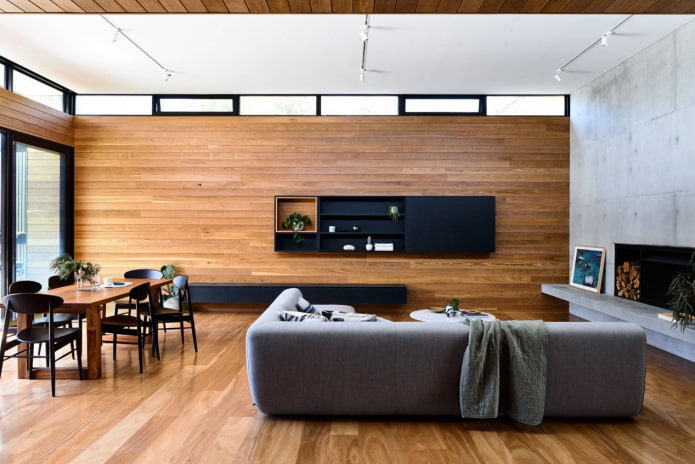
What is the predominant color scheme?
The main color of Scandi is considered to be white, diluted with warm shades. Classic Japanese is characterized by a love of deep, rich, but cold tones: sea wave, turquoise, indigo. Their combination in the Japandi style resulted in a love for complex colors: muted, dirty, but cozy.
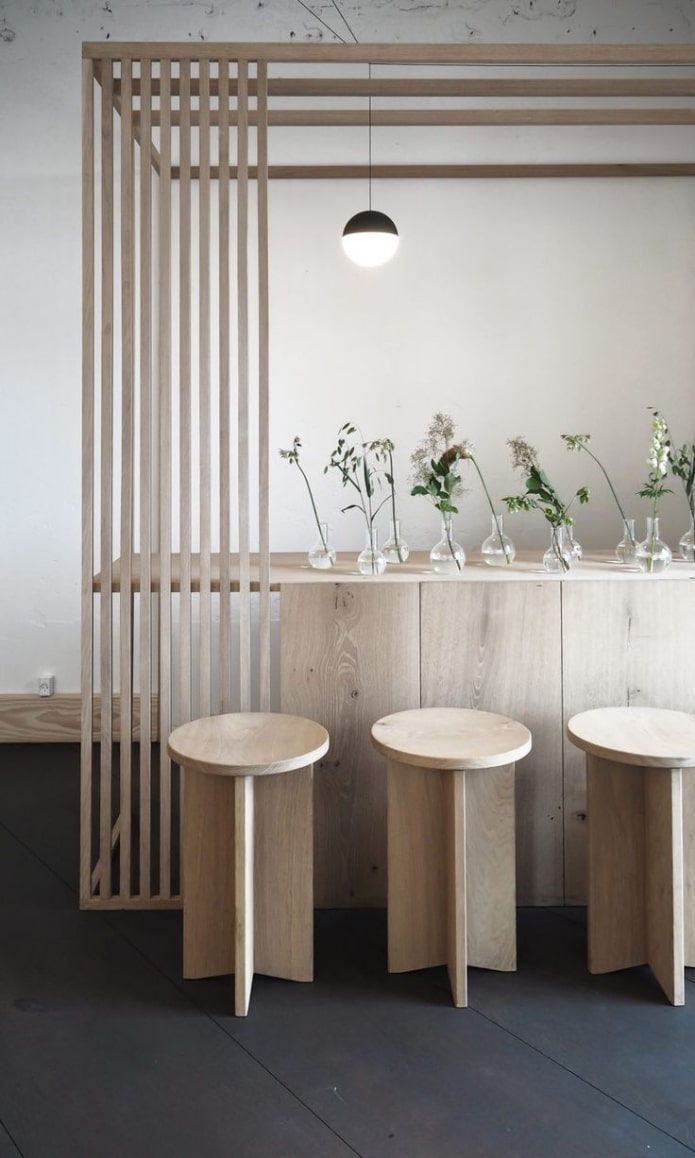
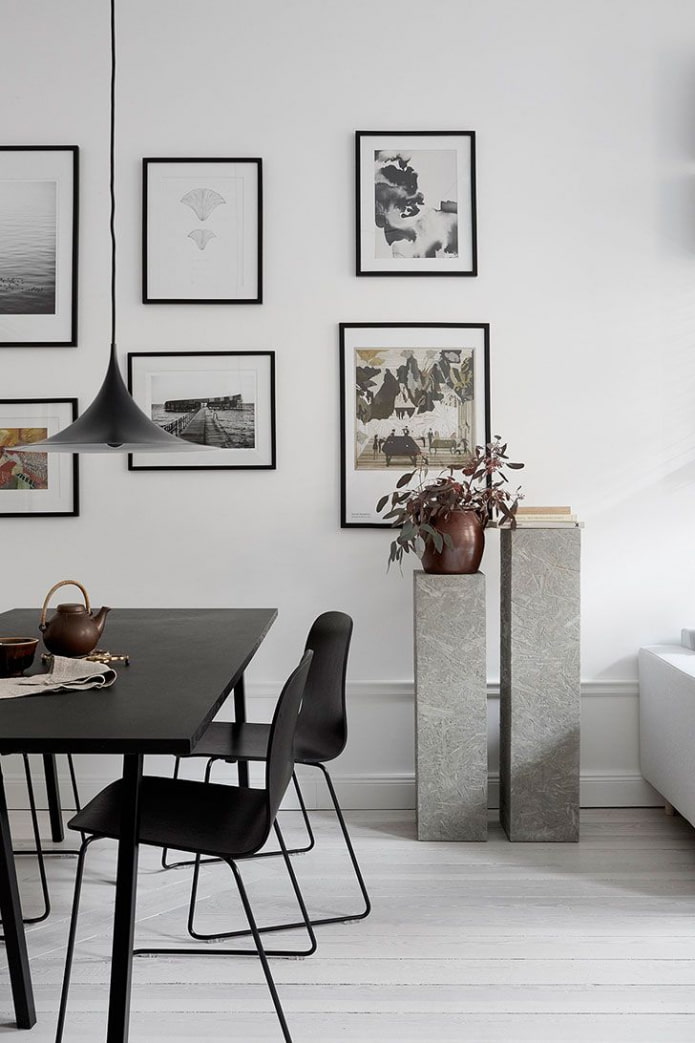
The basis of the palette is considered to be neutral gray, beige, brown, although in the “transitional” stages white is still found. Additionally, cold blue, green, and pink tones are used: these can be colored wallpaper (Scion has a whole Japandi collection, including 32 print and shade options – see examples in the photo in the “Finishings” section), curtains, textiles.
An important nuance of interior design in the Japandi style is the creation of contrasts. Light walls + dark floor, dark walls + light furniture, light background + black accents.
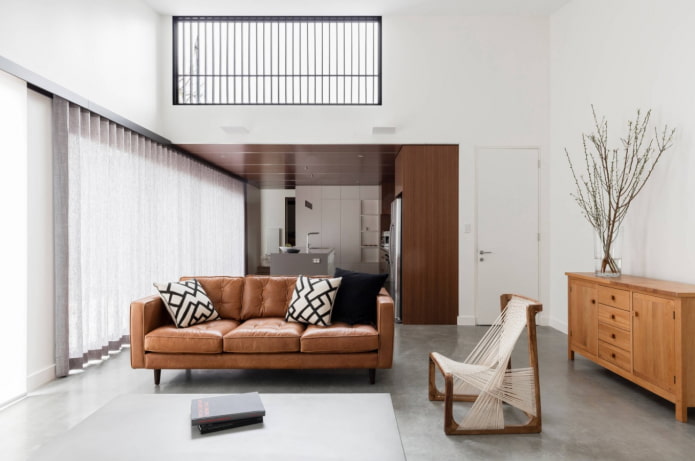
What kind of finish is suitable?
The combination of simplicity and naturalness can also be seen in the choice of finishing materials, methods of decorating walls, floors, and ceilings.
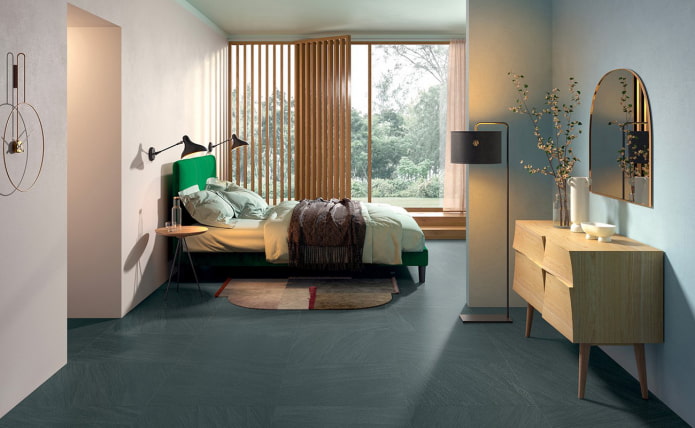
Walls
The most popular option is painting. Monochrome surfaces are universal and functional — that’s why paint is used on most vertical partitions. Individual accent walls can be highlighted with suitable wallpaper, wooden slats, natural stone, ceramic tiles.
Ceiling
Classic: pure white, gray, black. A concrete ceiling will give an industrial touch: all you need to do is remove the existing finish.
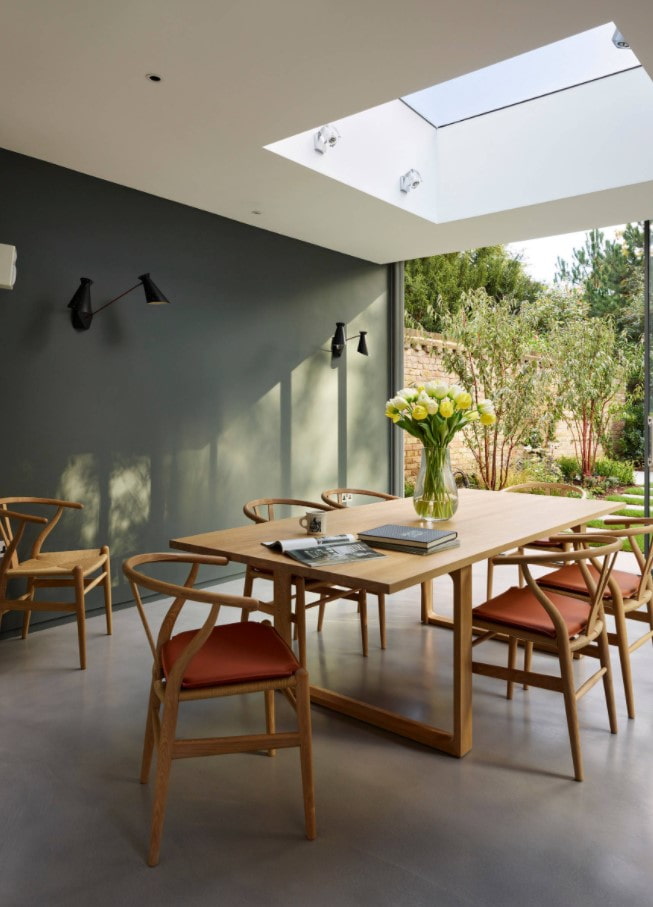
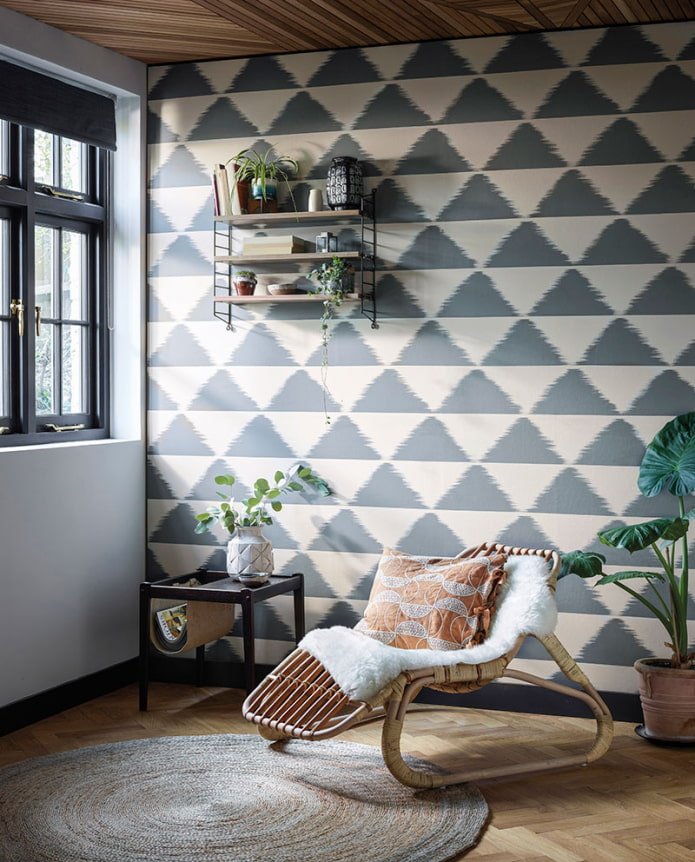
Floor
Wood is a win-win option. Natural, environmentally friendly, durable, warm. For the kitchen or bathroom – practical tiles, preferably dark in color, simple in texture.
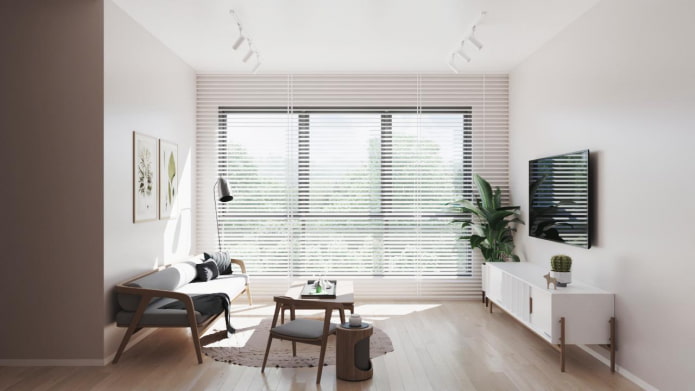
What furniture is better to choose?
Furniture in Japandi – low in Japanese style, comfortable in Scandinavian style. Chairs, tables, as well as cabinets, chests of drawers, choose from natural wood: wood shade from light to dark.
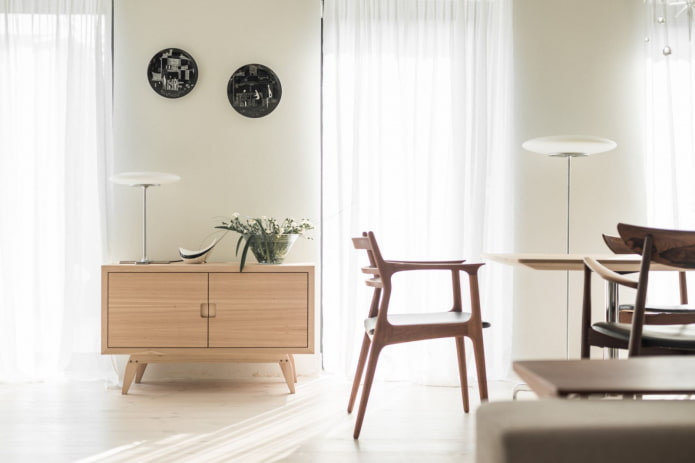
Soft armchairs, sofas are also chosen with wooden inserts: small legs, armrests, other fittings add warmth to ordinary products. Sofas can even look like wooden benches with soft, comfortable cushions.
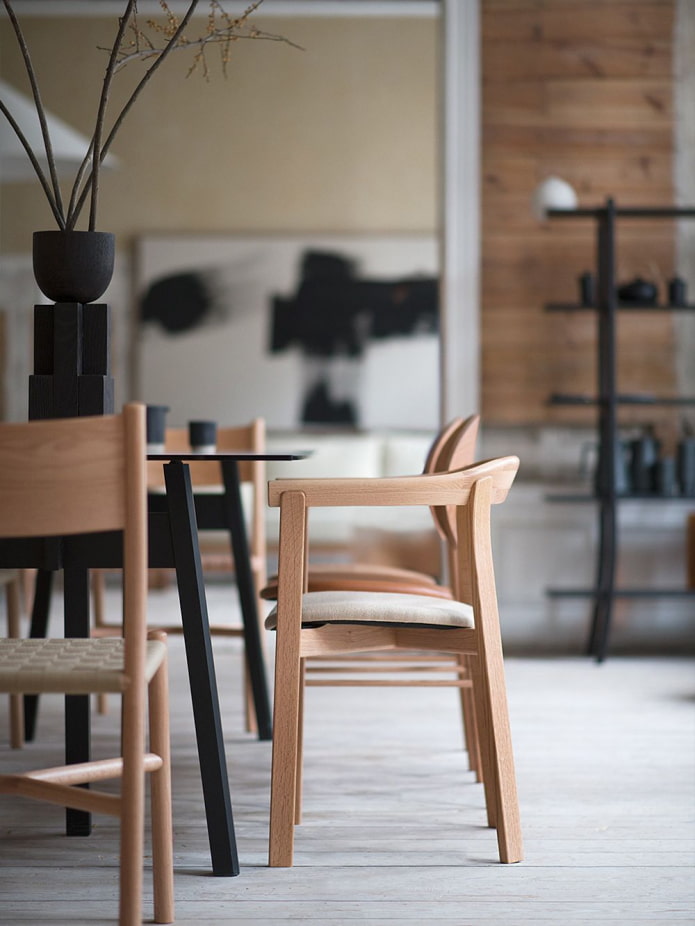
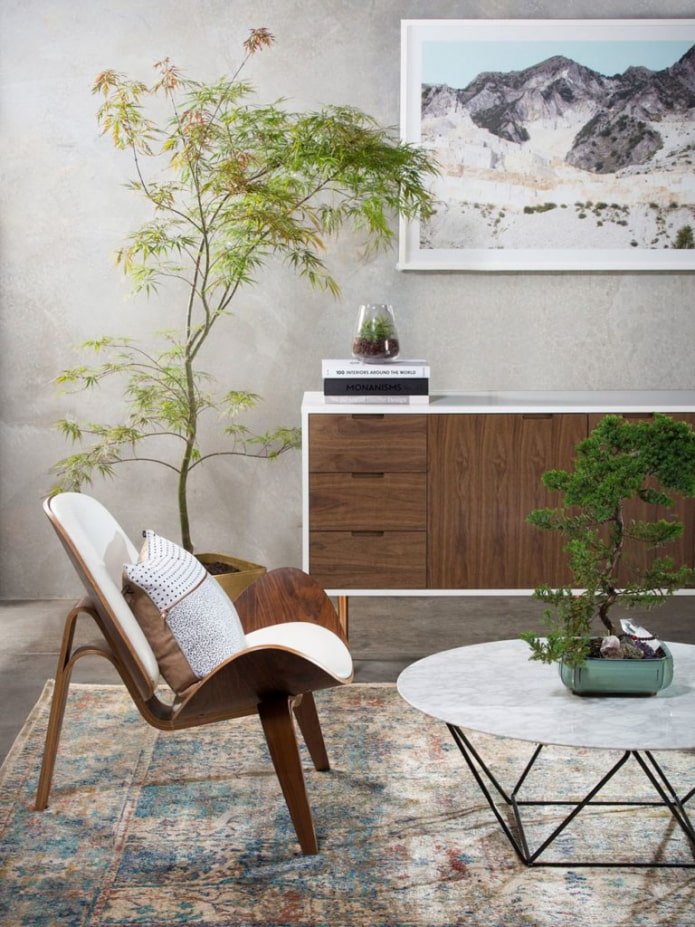
Designer items occupy a special place in the hearts of Japandi fans: IKEA is being replaced by unusual armchairs, chairs, tables, and shelving from Asian and European designers. They are distinguished by laconic smooth forms, combinations of unusual textures, minimalist design.

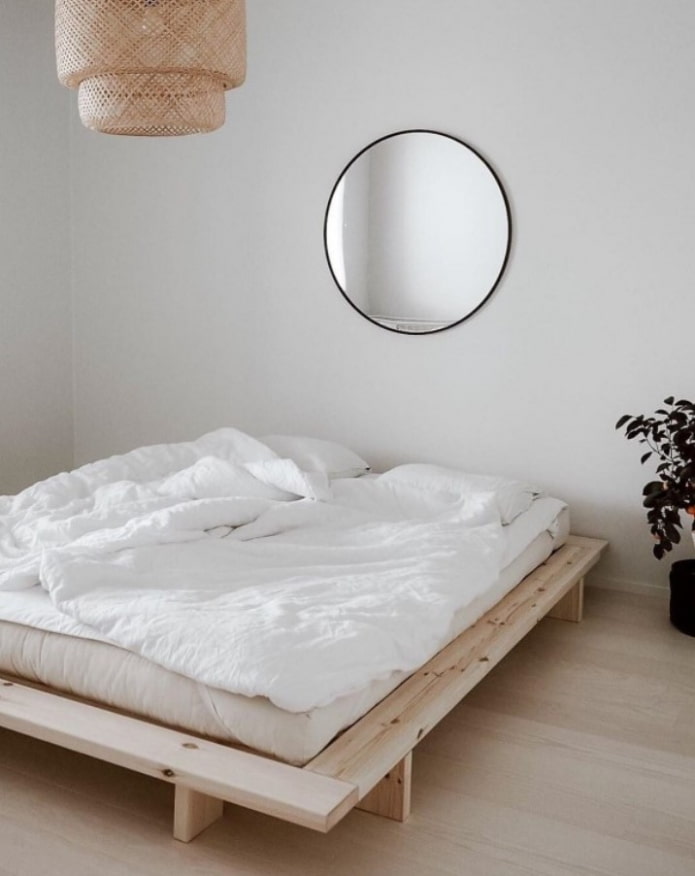
Recommendations for choosing lighting and decor
Japandi decorative elements are the same as the rest of the environment: simple, laconic. There shouldn’t be many of them: one large painting above the sofa or a set of 3 small items on the dresser is enough.
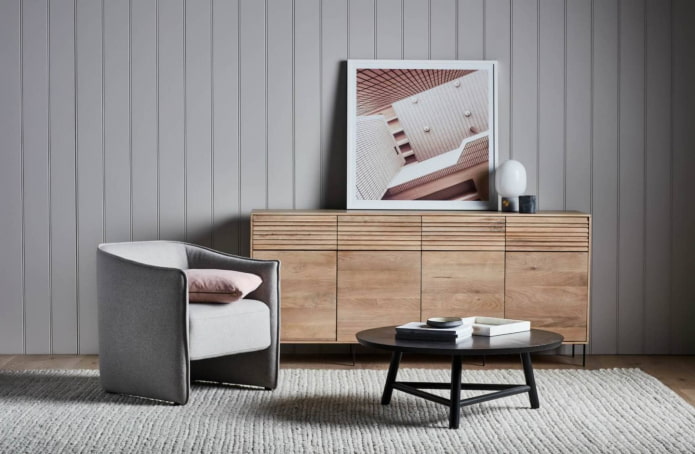
Light (pendants, chandeliers) is selected based on the tasks: lamps can be minimalist, so as not to conflict with the decor, or original designer ones, so as to become an accent themselves.
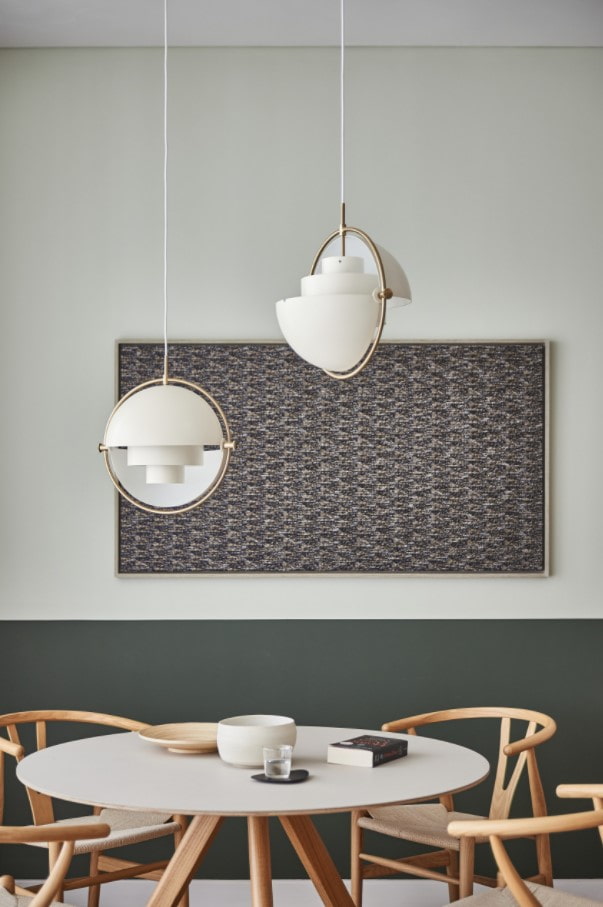
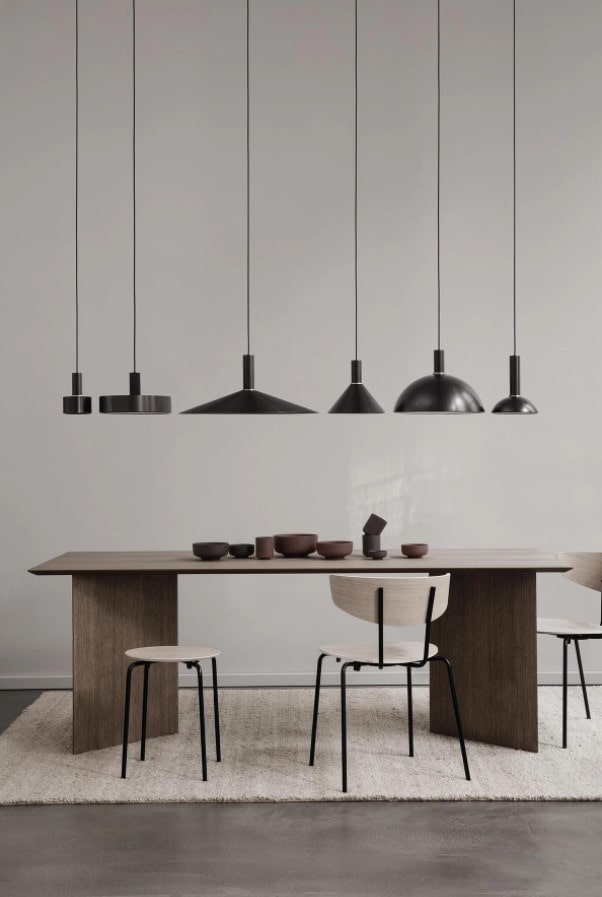
The ideal home decoration is natural. Live plants, ceramic or clay dishes, wooden figurines.
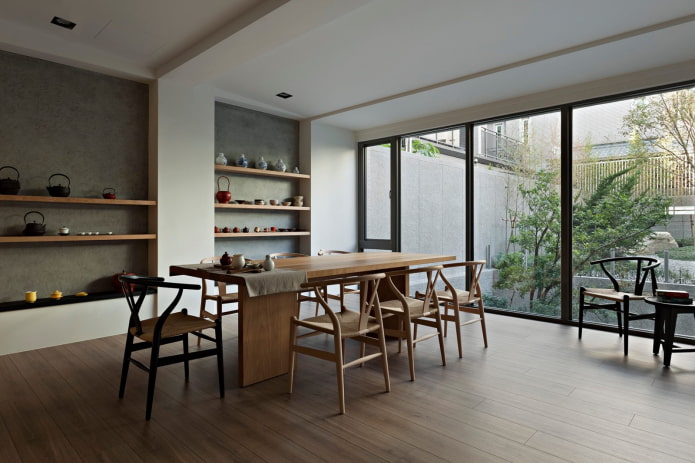
What textiles are used?
The philosophy of hygge suggests the active use of textiles at home and the embodiment of the Japandi style in the interior does not argue with this.
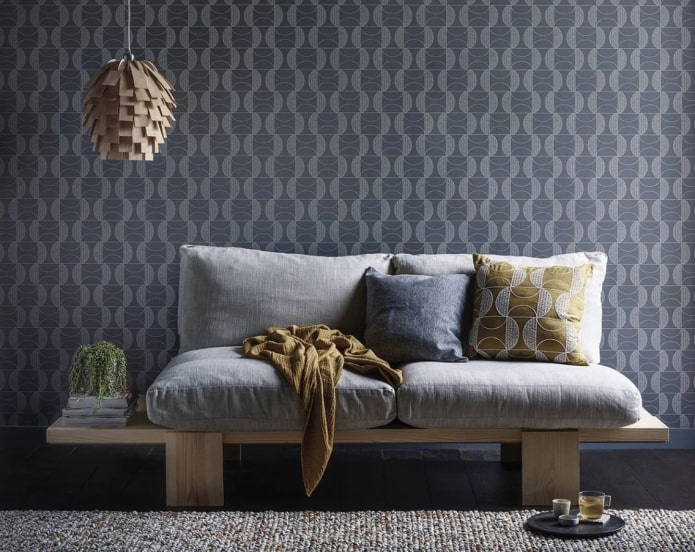
Curtains, blankets, carpets, pillows can be rich, deep tones, paying tribute to Japanese traditions. If you choose with prints, give preference to geometry or abstraction.
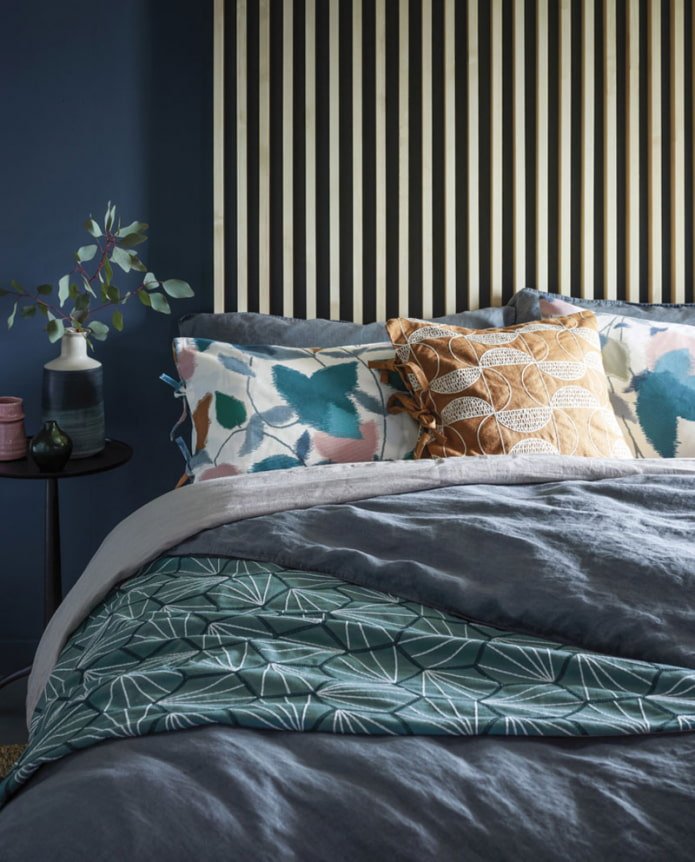
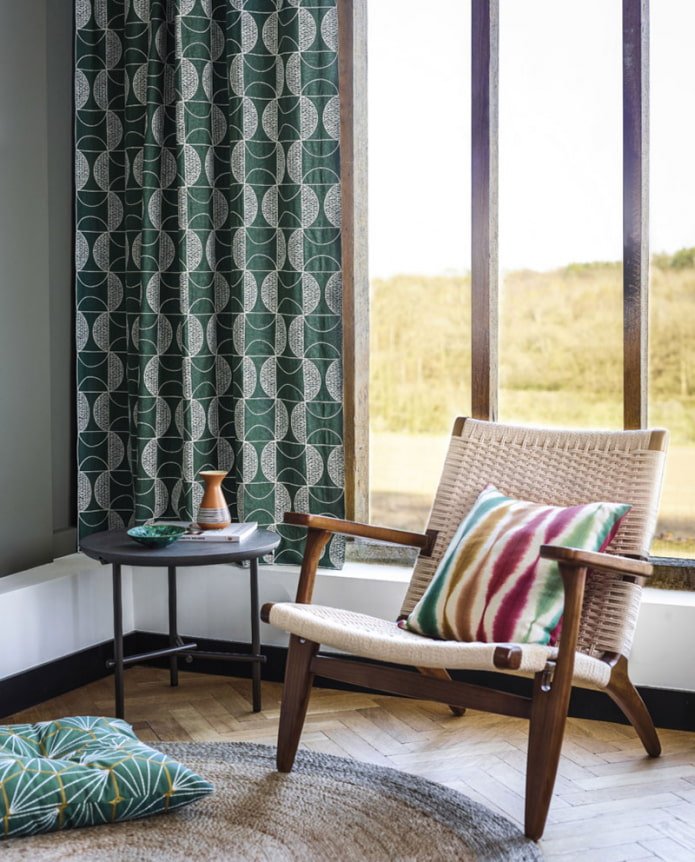
The second option is less contrasting: plain or non-contrasting fabrics of white, sand, gray shades add coziness to any space.
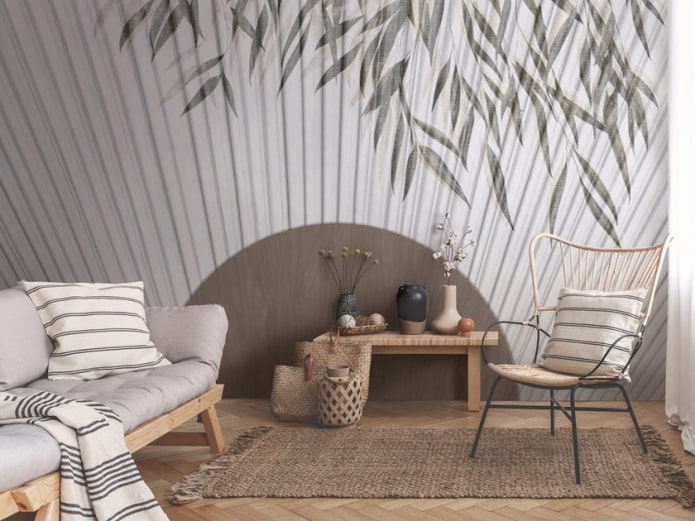
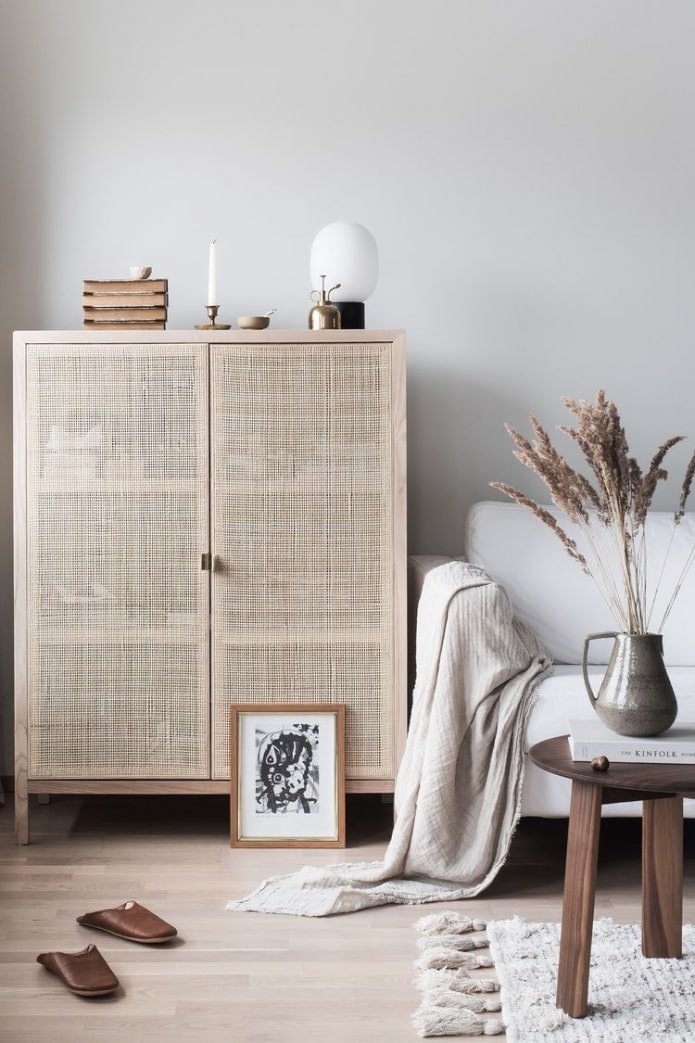
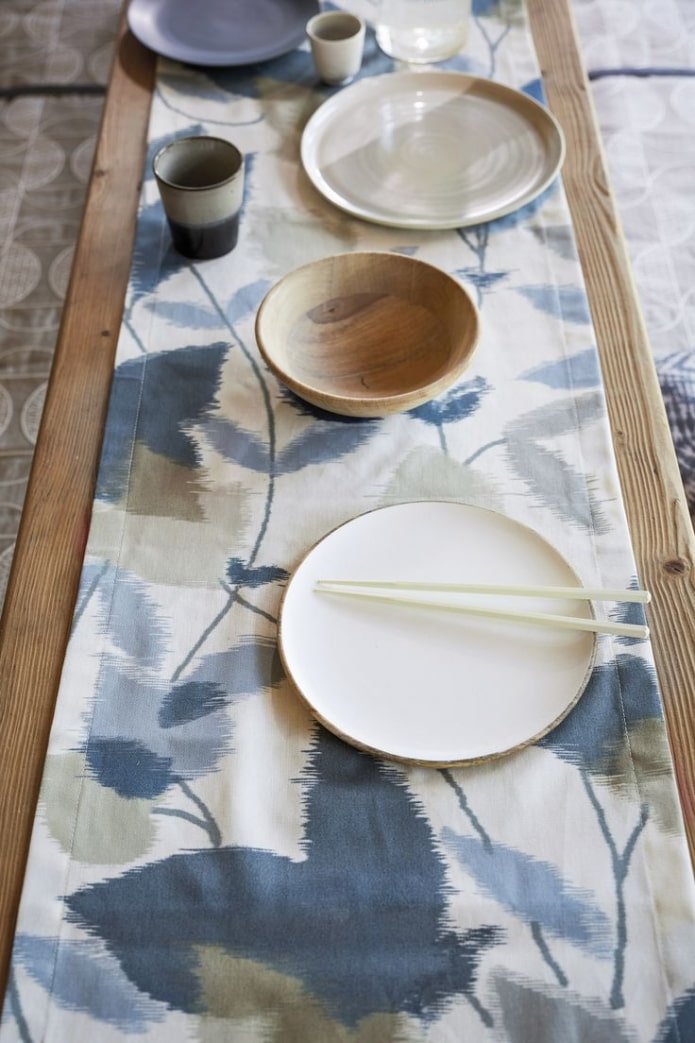
How does it look in the interior of the rooms?
Decorating an apartment in the Japan+Scandi style involves rejecting everything unnecessary and accepting the aesthetics of simplicity.
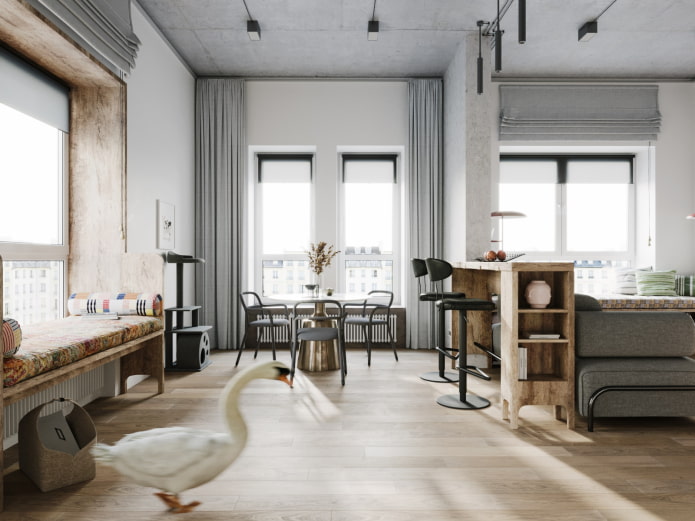
The kitchen is the only room where open storage is welcome. But there should be beautiful dishes on the shelves: cups, teapots, mortars, ceramic jars for storage.
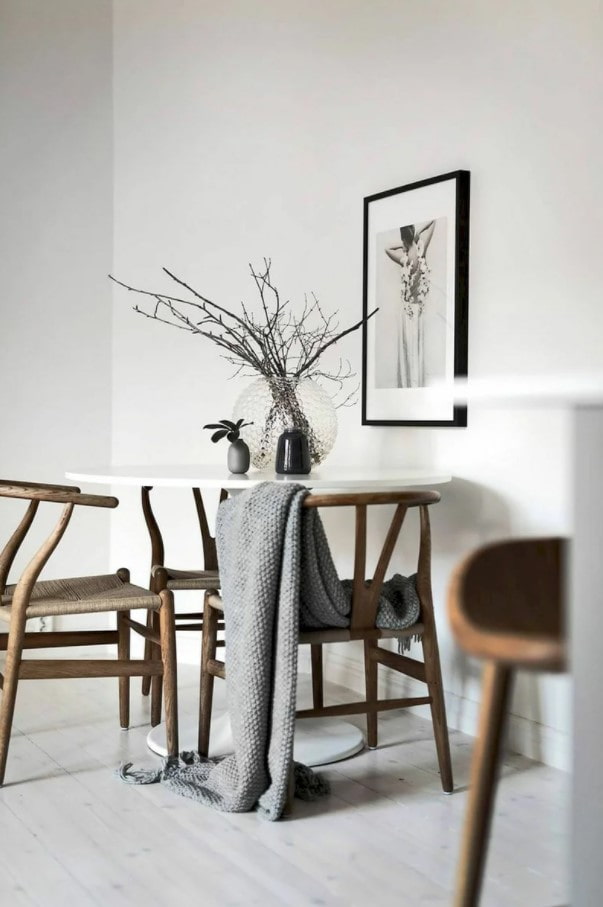
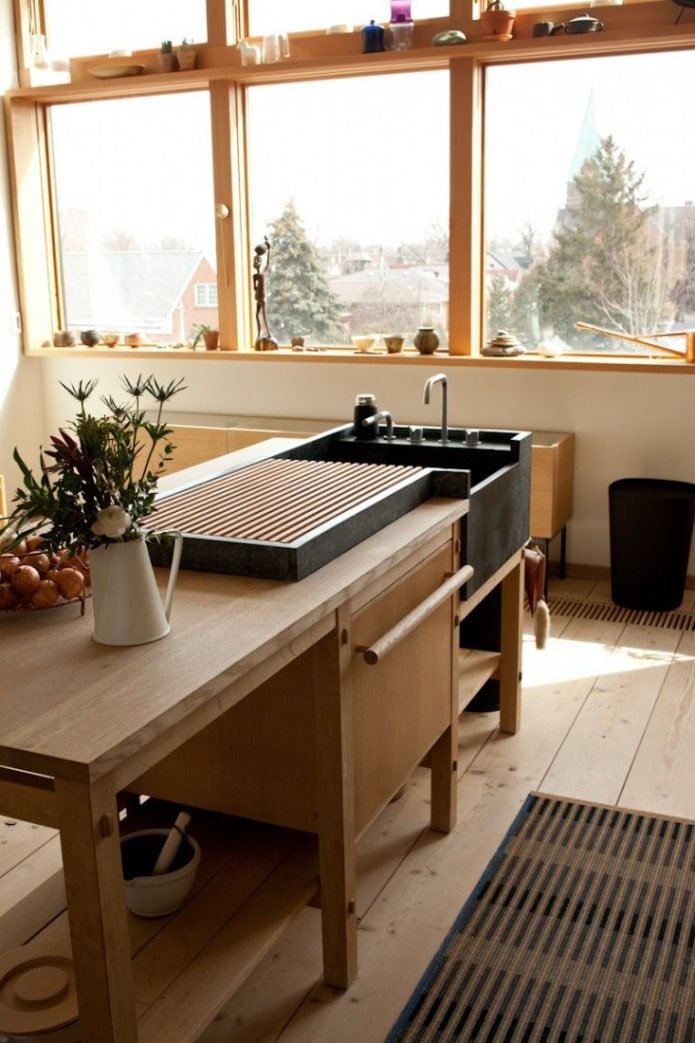
In the living room, all the furniture should be “lowered”: a low coffee table suggests installing a sofa with a suitable low seat. Instead of high shelves, it is better to use elongated floor cabinets.
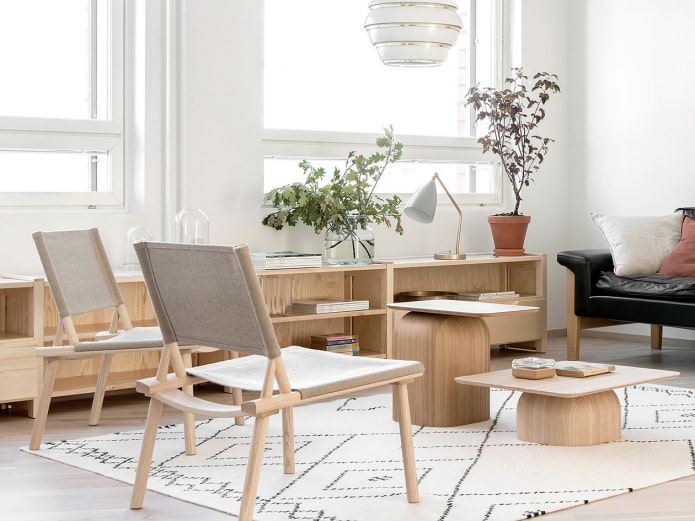
A bedroom in the Japandi style requires a low bed: the eastern standard height from the floor is only 20-40 cm.
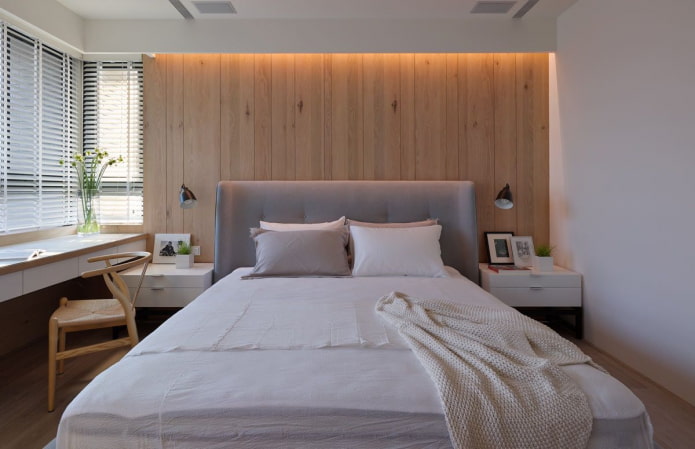
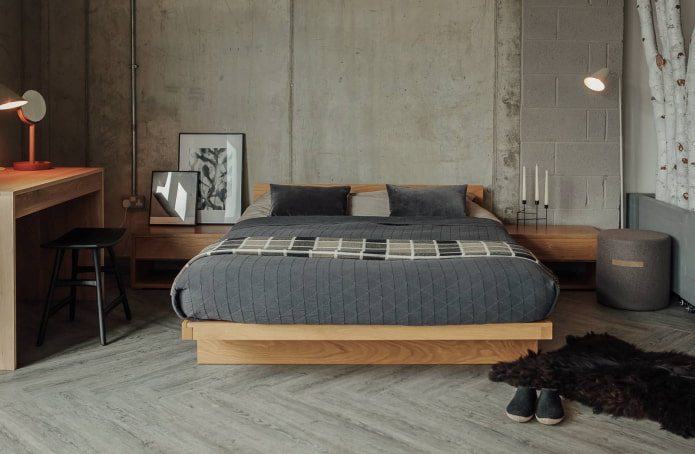
Japandi is a design that needs to be felt. It is primarily about comfort, a new standard of living and the rejection of everything unnecessary: if you are ready to let these principles into your life, pay attention to this style.
Now reading:
- Hidden kitchens in the interior: pros, cons and 35 photo examples.
- Installing roller blinds on plastic windows and walls: 4 simple steps.
- Creative Ways to Update a Budget IKEA Shelving Unit.
- Discover the Versatility of Hyundai’s H-1 Model
- Living room in high-tech style: more than 60 photos of interiors for inspiration